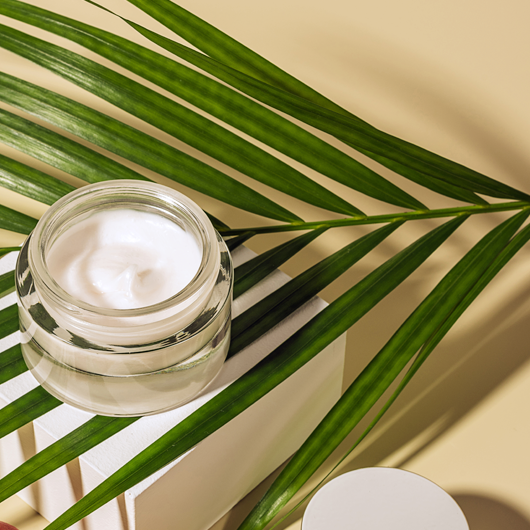Hialuronato de sodio (polvo de ácido hialurónico puro)
Polvo de ácido hialurónico puro para base casera y fabricación de suero de bricolaje
Cosmetic Powder Ingredient for Making Skincare Serums
¡Muy pronto!
15 gramos
Peso molecular NASHA 800-1500 Dalton
Grado cosmético
Alto peso molecular
Vegano
No GMO
Polisacárido Natural
Proporciona volumen, lubrica el tejido de la piel y revitaliza la flexibilidad.
Ideal para usar solo, agregando ingredientes adicionales para apoyar una mejor absorción después de exfoliaciones, tratamientos con láser y punciones en la piel.
PH 5.0-8.5
Puntaje del GTE
-
hialuronato de sodio Origin:
LOS INGREDIENTES IMPORTAN.
Opiniones de los usuarios
Questions & Answers
Have a Question?
-
If I mix 1 teaspoon of the hyaluronic acid powder to 7 tablespoons of distilled water to make my original base serum, using the chart for a 2% concentration into my DIY vitamin C serum for 1 ounce of base, would be adding 18 drops of the original hyaluronic acid serum, correct?
Yes, that is correct, you would add 18 drops of Hyaluronic Acid into your formula for a 2% concentration.
-
How much does the HA power weigh?
The Hyaluronic acid powder is 15 grams.
-
Can this HA powder be used dry and added to loose setting powders?
Yes, you can add Hyaluronic Acid powder to loose setting powders.
-
I would like to add this to a formulation of Distilled water, rose hydrosol, dimethicone, cylomethicone, cermide complex, propanediol 1,3, liquid germal and aristofllex...... would I replace some of the water or hydrosol and at what percentage
Follow the instructions to make the Hyaluronic Acid. Then, add the ready-made solution to your formula. Shake or stir until well blended.
How to Make Hyaluronic Acid from Powder:
Add 1 teaspoon of HA powder to 7 tablespoons of water.
Optional: For additional hydration, add 1/2 teaspoon of organic glycerin. Mix until well blended. Use a hand blender or homogenizer for best results. Cover, and place in the fridge until well hydrated. Usually about 24 hours.
Tip to Avoid Clumping
Hydrate the Hyaluronic Acid Powder in glycerin before adding it to the water base. -
HA acid powder + distilled water turned cloudy when Leuicidal Complete added. Is this normal?
Yes, make sure that Leucidal Complete is at above 95 degrees when using.
If your formula is still hazy, You can also improve the clarity of your formula by using a stabilizing agent. Using a 2% concentration of Sodium Citrate or Sodium Chloride with .5% Xanthum Gum. -
You don’t mention adding a preservative, how long would this be good for with just the water mix?
Typically, homemade formulas last for a few days up to a week in the fridge.
If you want your formula to last longer than a week, then a preservative should be considered.




